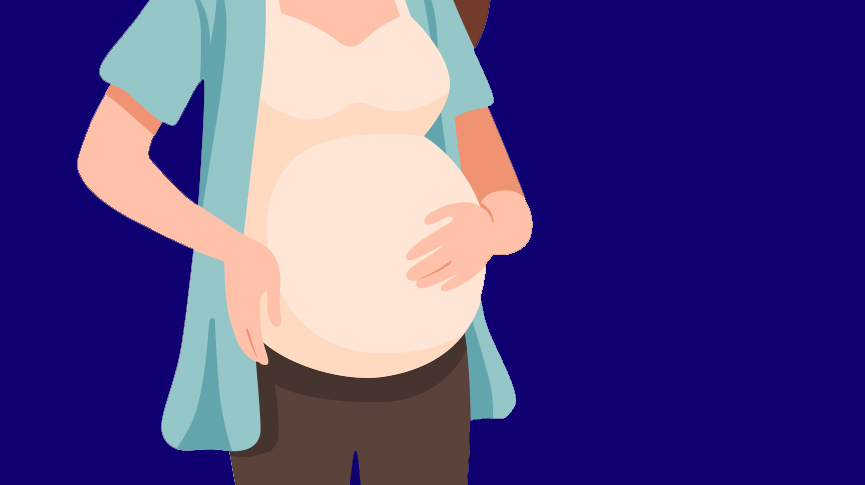Learn About The Stages of Pregnancy

Pregnancy is such an exciting time in someone’s life. Full of changes, questions, and unknowns. A lot of those unknowns fall into the category of “What on Earth is going on with my body?”
Between a growing belly, stretch marks, and changes in your breasts, there are a whole lot of changes going on in your body. These changes fluctuate throughout the different stages of pregnancy. The average pregnancy lasts about 40 weeks and is divided into three trimesters, which are about 12 to 13 weeks each.
Understanding these different stages helps you know what to expect, what questions to ask, and how to navigate all the changes during pregnancy. So whether you’re pregnant yourself or you’re getting informed to support a parent or loved one, we’re here to help you learn about the stages of pregnancy.
Conception
First things first, how exactly does a baby start growing? Conception starts when sperm meets an egg, whether that’s through sex, intrauterine insemination (IUI), or invitro-fertilization (IVF). As a fertilized egg travels through the fallopian tubes, the cell begins to divide and divide. After about a week, this cluster of cells, now called a blastocyst, has arrived at the uterus. This is slightly different for those undergoing IVF. The blastocyst then attaches itself to the uterine wall which then goes on to develop into a baby (or babies), and a placenta.
The First Trimester
This stage lasts from week one to twelve. In this stage, the developing embryo develops into a fetus around week eight. During this stage, the baby goes through all sorts of developmental milestones. First the lungs and hearts along with the brain, spinal cord, nerves, arms, and legs develop. In the second month of pregnancy, you see the baby’s bones, genitals, fingers, and eyelids begin to form. Come the third month, the bones, muscles, intestines, and skin start to develop. By the end of the first trimester, the fetus is about three to four inches in length.
For the pregnant person, this is when they might experience some uncomfortable changes thanks to a huge shift in hormones. Early pregnancy can cause people to experience breast tenderness, morning sickness – although that doesn’t just occur in the mornings, along with bloating, gas, and all sorts of fun changes.
The Second Trimester
In the second trimester, which lasts from about weeks 13 to 27, the fetus starts to look more and more like a baby. The baby will typically have fingernails, eyebrows, and eyelashes by the fourth month. Other essential functions start to kick in like being able to swallow and the kidneys producing urine. Come the fifth month, the fetus starts to become more active and develop vernix (a waxy coating) and lanugo (fine hair) to protect its skin from the amniotic fluids inside the amniotic sac. To round out the sixth trimester, the sixth month you see the baby’s brain developing, eyes beginning to open, and lungs completely forming, although they don’t function yet.
The pregnant person also goes through huge changes during the second trimester. Typically morning sickness has subsided at this point and they start to adjust to pregnant life. The belly will most likely start to be more and more visible, stretch marks may begin to appear, they may start to feel more energetic, and – start to feel the baby kick!
The Third Trimester
You’re nearing the finish line! The baby is almost done cooking and you’re starting to prepare for labor and birth. What sort of changes happens to the baby during the third trimester? Besides rapidly gaining weight, lungs starting to function on their own, and bones starting to harden, the baby also starts to prepare for birth by putting itself in position.
The third trimester can start to feel uncomfortable again for the pregnant person as the baby and the uterus gets bigger. This causes it to press on the bladder causing frequent urination and up towards the diaphragm which can cause shortness of breath. Hands, feet, and face might start to swell up thanks to fluid retention. It’s also normal to start leaking colostrum which is the early stages of lactation, along with Braxton-Hicks contractions to help prepare the body for labor.
As the pregnant person starts to prepare for parenthood (or a new phase in it), they might start to enter “nesting mode”. You might find yourself organizing your whole house, and deep cleaning every nook and cranny to prepare for the baby’s big arrival.
Full term is 39-40 weeks, although it’s totally normal (and common) for babies to come a little before or after this. Time to meet your baby!
The Fourth Trimester
Although it’s not often talked about, there’s a fourth stage of pregnancy that deserves just as much guidance and support (if not more), than the other three trimesters. This is called the fourth trimester is the first fortyish days after birth. You and the baby are bonding, getting the hang of feeding, and healing from the huge experience that is pregnancy and birth – no matter how the baby was born. If you want to learn more about pregnancy and how to navigate it you can check out pregnancy and birth terms A-Z, what to pack in your hospital bag, and whether you should take prenatal vitamins.

Natasha (she/her) is a full-spectrum doula and health+wellness copywriter. Her work focuses on deconstructing the shame, stigma, and barriers people carry around birth, sex, health, and beyond, to help people navigate through their lives with more education and empowerment. You can connect with Natasha on IG @natasha.s.weiss.


